Quality Management Strategies for Hotel Customer Satisfaction
Info: 7825 words (31 pages) Dissertation
Published: 17th Aug 2021
Table of Contents
1.2. The process of inspection and assurance
1.3. Approaches to quality management
1.4. Similarities and differences between the different methods
2.4. Information made available to customers and effective marketing importance
Introduction
We all have had experiences regarding to poor quality in our dealing with business organizations. These experiences are varied, such as a dry cleaner that has left clothes wrinkled or stained, an airline that has lost a passenger’s luggage, and a purchased product that is damaged or broken.
The powerful impact customer defined quality have on business is now understood by successful companies. Today’s popular customer-driven definition of quality is “Quality is meeting or exceeding customer expectations. As suggested by Evans and Lindsay (2010), to meet or exceed customer expectations, organizations must fully understand all service attributes that contribute to customer value and lead to satisfaction and loyalty. In the light of this, quality standards are continually increased by competitive firms. Quality is an important tool for the survival of an organization in the modern business market. Customers are now more quality conscious and demanding due to varied options they have to buy their goods and services. As observed by Goetsch and Davis, (2014) The term quality plays a vital role in all industries. The customers are not considered when fixing prices of products and services in some potential markets like the US and UK, yet they expect high quality and standard. It is therefore very essential to provide and maintain good quality products and services.
As the Front of House Manager of The Rose and Crown Hotel, I will proffer some ideas on how to improve quality with limited resources in the organization. The quality management aspects in the hospitality sector would be explored by the assignment focusing on The Rose and Crown Hotel. Quality management pertains to both products and services offered by the hotel. Being a concept with wide discussion in hospitality quality management is closely linked to continuous improvement which involves work to make something evolve, it is implemented within a reference framework, it uses tools and methods and involves repetition and evaluation (EU, 2000). Higher efficiency can be achieved by an organization in the process which can create higher customer satisfaction as well.
1.1.Definitions of quality
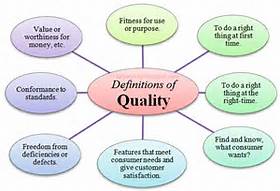
Source- https://uk.images.search.yahoo.com
Companies make profits by selling their products and services. The question is, how do these companies maintain their profit and competitiveness in the market? Quality management is practiced by companies to improve the quality of their products and services. In business, Quality is defined as fitness for purpose. It is also pragmatically interpreted as the non-inferiority or superiority of something. Quality can be viewed as a conditional, perceptual and subjective attribute which can have different meaning to different people. While producers might measure conformance quality, that is the degree to which the products or services were produced correctly, consumers focus on specification quality of products/services, meaning how they can be compared to competitors in the market. Quality is measured by support personnel in how the product is sustainable, reliable or maintainable. In a business context, quality have five aspects which include, producing i.e. providing something, checking- confirming that something has been done correctly, quality control which is controlling a process to ensure that the outcomes are predictable, quality management relates to directing an organisation so that it optimizes its performance through analysis and improvement and quality assurance which involves obtaining confidence that a product or service will be satisfactory. This is normally performed by a purchaser.
Quality of a product or service is the perception of the degree to which the product or service meets the customers’ expectations. There are various business meanings of quality which have been developed over time.
According to ISO 8402-1986, Quality in business is the standardized features and characteristics of the particular products and services which can satisfy the target clients”.
Chowdhury (2005) suggested that “Quality combines people power and process power”. According to Drucker (1985) “Quality in a product is not what the supplier puts in. It is what the customer gets out and is willing to pay for. Quality combines both quantitative and qualitative perspectives. These are, “Meeting the expectations and requirements in service or product that were committed to” and “Pursuit of optimal solutions contributing to confirmed successes, fulfilling accountabilities”. American Society of Quality, suggested that quality can be a product or service free of deficiencies and the characteristics of a product or service that bear on its ability to satisfy stated or implied needs” (American Society for Quality). Deming (1986), linked quality and management. He concentrated on “the efficient production of the quality that market expects”. He further postulated that “Cost go down and productivity goes up as improvement of quality is accomplished by better management of design, engineering, testing and improvement of processes” (Deming et al,1988).
ISO 9000 defines quality as the degree to which a set of inherent characteristics fulfil requirements. It defined requirement as expectation or need by the standard. Quality is also defined by Six Sigma Rule as number of defects per million opportunities.
For a product manufacturer, the product must be fit for the use of customers, and also meets its intended purpose as planned by the business but also conform to the manufacturer’s requirements. For a company that provides service, the intended purpose of a particular service of the company must be met by the service, it must be fit to the customers’ requirements and conform to the requirement of the company. Banks, for example, maintain good and reasonable services to customers, provide tidy and comfortable environments, reasonable lining up time, clear and proper knowledges of the bank services and products, good manners and courtesy of the bank staff, which relate to banks quality service.
There is also a reflection of quality in after-sales service, which comprises of warranty and response to customers’ complaints. Nowadays, companies provide suitable warrantee terms, react quickly and positively to the customers’ complaints, so that quality can be maintained even after sales. These help companies in obtaining and retaining customers’ loyalty which contribute to increase in sales in the long term.
Finally, there is a wide discussion of quality in hospitality. Within the hospitality industry, we can define quality as “the consistent delivery of products and guest services according to expected standards”. In service organisations quality is conformance to specifications. It also includes tangible factors such as the physical environment (spatial layout, functionality and signs) which have effects on customers and employees. There is also responsiveness to customer needs, courtesy and friendliness, good atmosphere timeliness and promptness in service quality and delivery. There is a willingness by guests to pay more when they are offered services that meets or exceeds their expectations. As pointed out by Hayes, et al (2011) Quality service level is factor that is critically relevant when you consider the guests’ experiences during visits to lodging operations.
1.2. The process of inspection and assurance
In order to maintain quality throughout its operations, The Rose and Crown Hotel lays emphasis on inspection and assurance. We can describe an Inspection as an important strategy which in its simply, is a formal evaluation exercise or organized examination. It is any tactics, device or method used for the minimisation of defects in the goods and services customers are being offered. It can also be considered as an organization’s performance review. Inspection aims to test, measure and check one or more product characteristics and to relate the results to the requirements to confirm compliance. In the light of The Rose and Crown Hotel it is the gauges, evaluation and analysis that are applied to the hotel’s specific activities which aids the quality of the hotel’s business.
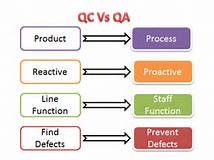
Quality control (QC) is the process of reviewing factors involved in production. It can also be described as a set of activities for ensuring quality in products. ISO 9000(2005) defines quality control as a part of quality management focuses on fulfilling quality requirements. The approach emphasised on elements likes performance and integrity criteria, identification of records, job management, controls, defined and well managed processes. Emphasis is also on competence, such as skills, qualification, knowledge and experience. Other soft elements for example personnel, confidence, integrity, motivation, team spirit, quality relationships and organizational culture. The aim of QC is to identify and correct defects in the finished product. We can therefore describe QC as a reactive process. Quality control will identify product defects after its development before it is released. QC include product inspection in which case every product is visually examined for fine detail before sale of the product. Lists and descriptions of unacceptable product defects for instance surface blemishes or cracks will be provided to the inspectors. QC ensures that the defined standards are followed at every step. It is a failure detection system that uses a testing technique to identify errors or flaws in products. Quality control is an evaluative and corrective process. The processes of quality control involve sampling, calibration, and documenting reviews and giving feedback for improvement
Quality assurance (QA) process involves preventing defects or mistakes in products manufactured and at the same time avoiding problems when delivering services or solutions to customers. ISO 9000 (2005) defines it as “part of quality management focused on providing confidence that quality requirement will be fulfilled”. The two principles of quality assurance are “right first time” which means that mistake should be eliminated and “Fit for purpose” that is the product should be suitable for the intended purpose. QA process is a monitoring process. It is a series of steps taken at the different stages of the product life cycle from the conception of the product to its launch through its obsolescence. Assurance defines the standards to be followed. Assurance of quality is a set of preventive activities, which are focused on processes. It is a failure prevention system that predicts safety, quality standards and legality. Quality guarantee department develops all the planning processes and procedures to make sure the output is of good quality. Quality guarantee processes involve implementing real-time quality checks in every department. QA comprises procedural and administrative activities which are implemented in a quality system to allow for goals and requirements for a product, service or activity to be fulfilled.
The process of making reservations at The Rose and Crown Hotel is straightforward. As part of its quality control, the hotel considers the business practices and unique cultures of individuals and organisations and draw up a strategy which helps in simplifying service delivery and enhance quality. The service level agreements between The Rose and Crown Hotel and its customers provide proactive account management. It also anticipates changing requirements and react accordingly. The Rose and Crown Hotel issue a unique client reference for each individual or organisation which is coded when reservations is being confirmed. The hotel issues unique reservation references per individual booking with confirmation issued to the guest on request. The Rose and Crown quality control is accredited to ISO 9000 with guaranteed reservations. There systems are regularly audited and is backed by their policy of constant improvement. The quality assurance at The Rose and Crown provide consumers with service standards they can trust which meets their expectations. It also helps the hotel’s marketing efforts as well as support its product development in order to maintain the desired level of quality being attained by the organization, The Rose and Crown Hotel quality assurance process should monitor its quality of service. This would help the organization to reduce defects and enhance customer satisfaction.
1.3. Approaches to quality management
The Rose and Crown Hotel can use several quality management approaches to ensure high products and services quality. W. Edwards Deming (1986) is considered the “father of quality control”. Deming’s philosophy has some elements different from traditional notions of quality. They include the management’s role in a company’s quality improvement effort. Deming’s work suggested that worker error contributes only 15 percent of quality problems, which is a departure from the historical perception of blaming poor quality on workers, carelessness, laziness or lack of productivity. He however indicated that 85 percent are due to systems and processes, that includes poor management. According to Deming, management may now correct system problems. They should create an environment that promotes quality and enables workers to achieve their full potential. In his submission, the system determines quality. Continuous improvement and customer orientation can lead to the achievement of the quality. This is an appropriate approach for The Rose and Crown Hotel because it is more systematic and helps in providing high degree of quality assurance. Deming pointed out that customers expect quality. He therefore encouraged managers to plan for the future in addition to problems anticipation to get rid of waste. Some of the theories postulated by Deming include Deming’s “System of Profound Knowledge” which include Deming’s ‘14-Ponts’and Deming’s cycle Plan, Do, Check, Act. They are, create constancy of purpose, adopt the new philosophy, cease dependence on mass inspection, end the practice of awarding business on price tag alone, improve constantly and forever the system of production and service, institute training and retraining, institute leadership, drive out fear, break down barriers between staff areas, eliminate slogans, exhortations and targets for the workforce, eliminate numerical goals, remove barriers to pride of workmanship, institute a vigorous program of education and retraining and take action to accomplish the transformation.


Joseph Juran has the greatest impact on quality management. He defined quality as fitness for use. He suggested the translation of customer needs into process and product features. Juran implemented Pareto analysis to target opportunities for prime improvement by separating critical few 20% from the trivial many 80%. According to Juran Quality trilogy, there are three basic quality oriented processes, quality planning, quality control and quality improvement. Quality planning has a role of designing a process to meet established goals under operating conditions. Quality improvement devise ways to take the process to unprecedented levels of performance and finally, quality control’s role is to operate and correct the process when necessary so that it performs with optimal effectiveness.
Juran Pareto Principle 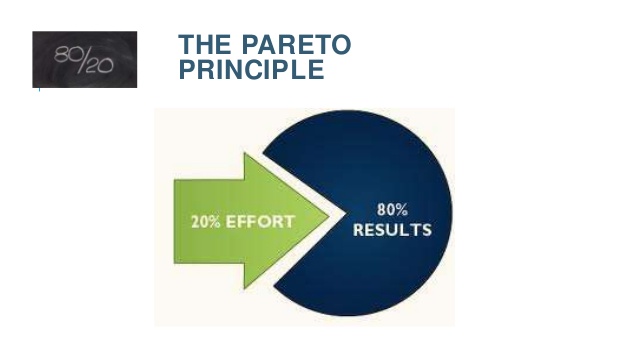
According to Evans and Lindsay (2014) options like quality control, quality planning, and quality improvement is provided by the pareto analysis to organisations. Ahire and O’Shaughnessy (1998) identified ten steps to improve quality for the organization. These are building awareness, organising, setting goals, imparting training, reporting progress, project execution, giving recognition, keeping scores, continuous improvement and keeping the results. Phillip Crosby in his approach to quality management identified six points, including doing it right for the first time, four absolutes of quality, zero defects, prevention process, six C’s, and quality vaccine. The Phrase “Do it right the first time” and Zero defects notion” was developed by Crosby arguing that defects are not acceptable. He objects to the notion that a small number of defects is a normal part of the operating process due to the imperfections of the workers and the systems. He however emphasised the idea of prevention. He used the phrase “quality is free” and pointed out costs of quality such as, cost of wasted labour, scrap, equipment time, lost sales, rework and organizational costs that cannot be quantified. According to Crosby, quality improvement efforts more than pay for themselves due to the fact that these aforementioned costs are prevented and therefore, quality is free. The role of management in quality improvement effort was also stressed. He used statistical control tools to measure and monitor quality. This approach will help The Rose and Crown Hotel to achieve competitive advantage.
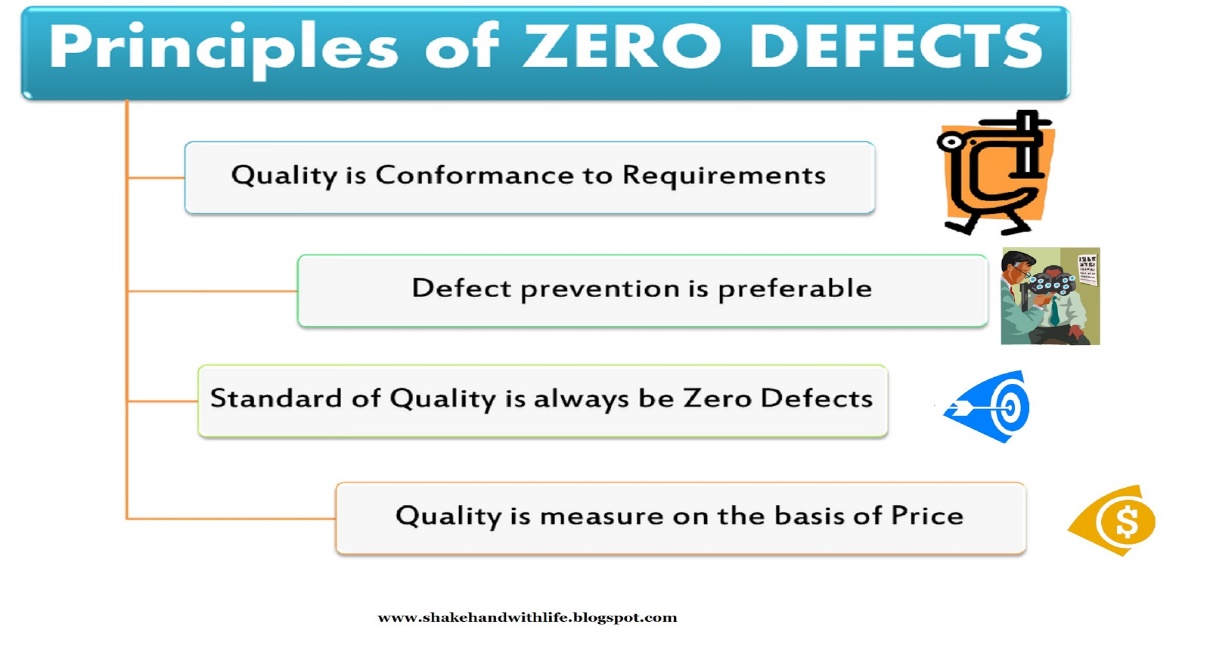
Crosby’s Principle
Feigenbaum devised total quality control as a concept that contributed total quality management. Quality control performs the job of new design control, incoming material control, product control and special process control.In his contribution to quality as a body of knowledge, he stated that total quality control integrates quality development, quality maintenance and quality improvement efforts of different people or groups in a company to allow production and service at the most economical level that enable full customer satisfaction. He also discussed about the concept of a hidden plant that is there are extra work is performed to correct mistakes which indicates that a hidden plant within any factory. Feigenbaum also stressed the need for accountability for quality pointing out that quality is everybody’s job and may be nobody’s job and that quality have visibility at the highest levels of management and that quality must be actively managed. His work also includes quality costs which is a means to quantify the total cost of quality related efforts and deficiencies.
Kaoru Ishikawa developed cause-and-effect diagrams or fishbone diagrams. It breaks down in successive layer of detail root causes that potentially contribute to a particular effect. These are quality tools that are used to solve quality problems. He emphasised how important internal customer is as the next person in the process of production. He pointed out how crucial total company quality control is instead of concentrating on products and services only. Ishikawa is of the view that people in the organisation should have a shared vision and common goal. According to him, quality initiatives should be pursued at every level of the organisation which should involve all employees. He proposed implementing quality circles, i.e. small teams of employees who volunteer to solve quality problems. The approach supports The Rose and Crown Hotel to introduce and implement quality management that is companywide quality control that will lead to the success of the organisation.
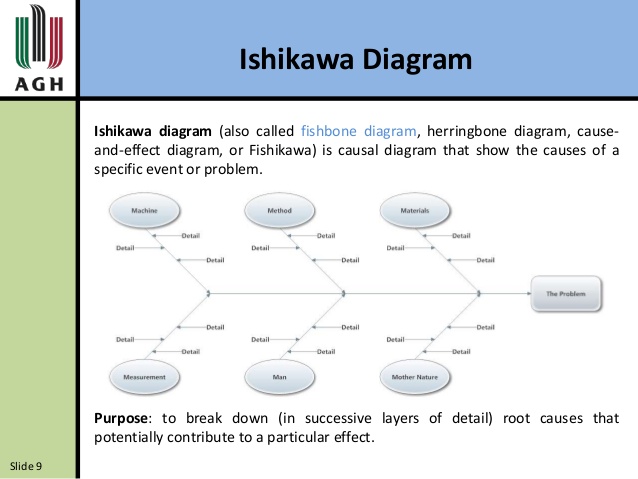
1.4. Similarities and differences between the different methods
Similarities
| Deming | Crosby | Juran | Isikawa | |
| Provision of training and education | Important for employees and managers | Important for employees and managers | Important for employees and managers | Quality begins and ends with education |
| Importance of customer requirements as standard | Very important | Very important | Very important, customers at each step of product life cycle | Very important. First step to quality is to know customer
requirements |
| Goal of quality | Continuous improvement; meet/ exceed customer needs | Continuous improvement; zero defects | Please customer; continuous improvement | Put quality first and set sights on long-term objectives |
| Responsibility for quality | Management | Management | Management | Management |
| Top management commitment | Discussed management in his 14 point. Strong commitment necessary | Strong commitment from the management | All levels of management must have commitment | Top management |
| Quality management practices | Saves money | Saves money | Saves Money | Save money |
| Quality improvement activities | Emphasised everybody should get involved | Everybody | Everybody | Everybody |
Differences
| Deming | Crosby | Juran | Isikawa | |
| Definition of Quality | No-faulty systems.
Continuous improvement |
Conformance to requirements or specifications | Fitness for use or purpose- freedom from trouble | Remove the root cause, not symptoms |
| Orientation towards quality | Technical | Motivational | Process | He emphasised human side of quality |
| Type of tools for achieving quality | Statistical process control; constancy of purpose; cooperation between functions | Minimal use; 14 point framework | Analytical, cost of quality; planning, control, improvement; quality trilogy | The use of seven basic tools of quality |
| Emphasis | Tools/system | Motivation (behaviour) | Measurement | Causation |
2.1. Customer satisfaction
Bartikowski and Llosa (2004) defined customer satisfaction as an overall assessment of the performance of various attributes that constitute a product or a service. Satisfaction is a person’s feelings of pleasure or disappointment resulting from comparing a product’s perceived performance or outcome (Kotler,2000) According to Yi (1990) “customer satisfaction is a collective outcome of perception, evaluation and psychological reactions to the consumption experience with a product or service”. Customer satisfaction is a basic differentiator and an important performance exponent of business strategies. An increase in the level of customer satisfaction also increase the business and customer bonding. It is part of a customer’s experience which exposes the behaviour of suppliers on customer’s expectation. Customer satisfaction depends on how services are promptly provided and how efficiently it is managed. We can relate customer satisfaction to various aspects of business such as product manufacturing, marketing, complaint management, post delivery services, engineering responses to customer’s problems and queries and so on. In The Rose and Crown Hotel, the overall essence of the impression about the hotel by the customers is customer satisfaction. It defines the customer expectations met by the services of the hotel. The impression made by the customers about the hotel is the sum total of all the processes that they go through, from the point of contact to the service delivery at the hotel. The customer comes across the hotel environment in addition to the hotel’s strategies. This will enable the customer to make an opinion about the hotel that will result in dissatisfaction or satisfaction. Measuring customer satisfaction in hospitality helps in knowing the success achieved by organizations to deliver its products and services. Dale et al (2013) pointed out that the comment rate or recommendation is the basis of assessing the physical and psychological consumer satisfaction. Agranoff (2007) indicated that consumers’ satisfaction rate can be assessed when the consumers make comparison with other products and services available in the market. The satisfaction level of consumers can be assessed by giving them a number of statements and these statements can be rated by the consumers based on the how their needs were fulfilled by these products and services. The Rose and Crown hotel can get a positive or negative feedback on consumer satisfaction based on the statement they left. Also several sources like website, blog, questionnaire, focus group and survey can be used to determine rate of the consumer satisfaction for the services of the hotel.
The most important people to companies are their customers. The requirements of the customers are fulfilled by the companies when they produce and provide quality products and services. Companies are in existence for the satisfaction of the consumers, because of their attraction to the best quality products and services. Customers’ expectations must be met by the products and services on offer. They must be valued at prices paid by the customer. Great customer service will make the customers feel welcome and that you care about having a long-term relationship which means more than making a sale. By providing superior customer service the hotel will benefit from repeat business due to a relationship that have been developed over time. The hotel can also benefit from an effective marketing tool called word of mouth advertising because happy customers will tell their relatives and friends about how the hotel took care of them, and this will help in growing he hotel business. The provision of excellent customer service will set the hotel apart from its competitors when customer service is part of its marketing strategy. A good customer service will improve employee morale because they will be eager to help customers and improve sales.
2.2 Continuous improvement
Continuous improvement also known as Kaizen is a process of constantly introducing small incremental changes in a business in order to improve quality and or efficiency. Continuous improvement as defined by Bhuiyan and Baghel (2005) is a culture of sustained improvement targeting the elimination of waste in all systems and processes of an organization. According to Masaaki Imai, Kaizen is improvement every day, everywhere, for everybody and not simply continuous improvement. Juergensen (2000) quoting Deming’s description of Continuous improve say it consists of “improvement initiatives that increase successes and reduce failures”. Bessant et al (1994) define Continuous improvement as “a company-wide process of focused and continuous incremental innovation”. Kossoff (1993) stated a company can achieve total quality by pursuing continuous improvement constantly through involving people from all levels of the organisation.
Continuous improvement involves striving consistently for the improvement of your product or service in line of the highest standards. In the long term, it is a process which achieves, enhanced quality of service delivery, attitudinal change, customer focus, recognition of customers, both internal and external, simplified processes and procedures. Continuous improvement is the seeking of small improvements in processes and products, with the objective of increasing quality and reducing waste. In the context of management, continuous improvement is a never-ending effort to expose and eliminate root causes of problems. It involves incremental or small-step improvements instead of an overwhelming innovation.

Source: Internet Images.
Kaizen in Japanese means ‘good change’ and is credited to W. Edwards Deming. In his view, continuous improvement is part of the system whereby feedback from the process and customer were evaluated against organizational goals. Continuous improvement can be found in improvement models for example Total Quality Management, which simply want to get better all the time. It seeks to establish a more empowered and engaged workforce to help make the changes in an organization.
The benefits of Continuous improvement include less waste, which complements lean production model, because lean means less waste, more value. There is also greater efficiency, because it seeks new ways to reduce waste of money and time. It enables the organisation to operate leaner because its total input costs will be lowered. Also the will be greater involvement of the employees, because they will have more say in their work and the way they work. The workforce will have better morale because they will be empowered to make small, incremental changes. Further, more efficient workers and increased productivity help lower costs, and thus this makes products and services to be more competitive. The organisation will be able to retain its skilled employees for longer because they will be more engaged and feel connected to decision-making.
Quality improvement for The Rose and Crown Hotel involves making continuous efforts aimed at improving the quality of products and services they deliver. This offers long lasting benefits for the hotel and its staff regarding culture of efficiency. The Rose and Crown Hotel can utilise kaizen methods of continuous improvement in the quality of products and services they deliver (Dettmer, 1997). Wastes that the hotel generated through its activities can be reduced to minimum level therefore making the organisation to be more efficient. Kaizen process can help The Rose and Crown hotel to reduce customer waiting time for check in and checkout thereby increasing the level customer satisfaction.
2.3 Added values to be gained
Value added is the enhancement added by a company to its product or service before offering it to the customer. It applies to situations where a company takes a homogeneous product from that of a competitor and provide customers with add-on or a feature that gives it a greater sense of value. Value added can drive customer acquisition, build lasting loyalty and increase customer retention. A business can add value by building a brand that has a reputation for value, quality which a customer is ready to pay for. Delivering excellent service, (high quality, attentive personal service) can make the difference between achieving a high price or a medium price. Customers will pay more for a product that saves them time or that they can have straightaway. If The Rose and Crown Hotel successfully adds value it will be able to operate profitably because its selling price will greater than the cost of its products or services. The Hotel will have a benefit of charging a higher price, it will also create a point of difference from the competition and will also be focused more closely on its target market segment. Added value will also protect the hotel from its competitors trying to steal customers by charging lower prices.
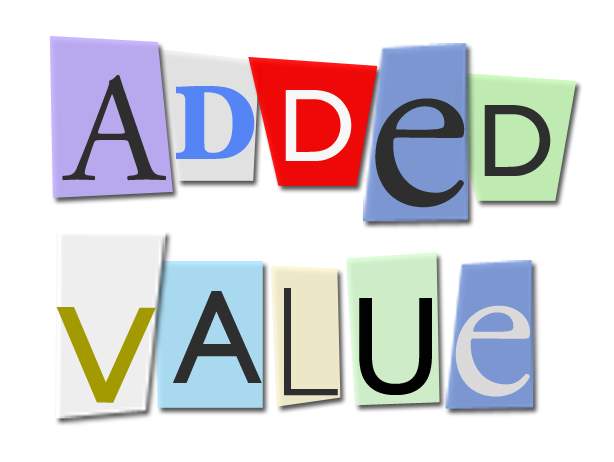
An organisation will be able to gain some added value to its products or service delivery. Added value is equal to the increase in value created by a business by undertaking the process of production. It is the difference between the price of finished goods or service and the cost of the inputs involved in making it. Businesses can use added value as a tactic to acquire and retain customers, differentiate one’s place in the marketplace and increase brand awareness. Along the line of marketing, added value is turning finished goods or services into branded products, while from the aspects of finance, added values relates to the values of inputs to a production, that is raw materials and the value of output from that production process which means finished goods. These consist of
Firstly, Environmental Added Value which places on environmental protection. The organisation employed those systems or methods that are less harmful than those commonly used or which do not harm the environment. Such methods include, using less fuel, less toxic wastes and also using recyclable materials for packaging.
Secondly, there is also Cultural Added Value which is a type of social marketing strategy. This method is used to meet the needs and sensitiveness of some cultural groups in the production process. As an example, production of Halal foods for Muslims.
Thirdly, Quality Added Value is a value addition system which generally adds convenience to the products or services or other characteristics which are desired and values by the customers during consumption. Enrichment of foods with vitamins and minerals are good examples.
Finally, Cause-related is another type of social marketing strategy whereby businesses donate some of their revenues to a cause. A company may contribute to an educational facility for poor children by donating a percentage of revenue from each transaction.
Within the hospitality sector, added value is the cost of products and services which are input in the hotels and output derived through the input. The following important steps can be adopted to add value to The Rose and Crown Hotel’s products and services, they are developing consumer understanding, planning process, developing awareness regarding quality, developing consumer understanding, analysing cost of quality reduction of errors, and measuring the performance.
2.4. Information made available to customers and effective marketing importance
Valid and reliable information is crucial to all organizations and businesses. An organization will have no idea of where it stands in its market, its sales and financial figures or how to proceed in the future without reliable information.
Customers want to understand company’s products or services as much as possible when they decide to start using them. Customers need adequate information from the company for this reason to make their decision. The customer generally, has a keen interest about a company’s support, mission, and vision when they start to use the company’s products. A general view of the company will be obtained from this information by the customer.
Detailed information about the company’s products or services should be available on their website and the customers should be allowed access to them. Companies also make information available on the television, and the internet. Company particularly use the internet to disseminate information to the customers because feedback can be obtained faster through the internet than any other medium.
Information of any changes done on the product must be provided by the company to the customers. Feature of each product or service should be presented which will attract the customers to use the products and this will effectively contribute to the company’s marketing strategy.
The company must provide information about the safety precaution needed when using the product. The company also should ask for feedback from the customers for them to report back about the product/service which will help the company in making proper decisions on improving their product and services. Customers will pay attention to a product the more information they know about it. This strategy may be described as the purchasing psychology of customers. If any change is done in any product, company must provide this information about the changes to their customer. The customer will be satisfied with this, because this clearly shows that the company shows that they respect and care about their customers. An improvement in quality will increase sales therefore they need information about the improved product will help them use the product for a long time. A communication channel may be set up by the company so that their customers can report about the weakness of their product, which will help the company improve the quality of the products. The availability of information improves sales and profit for the company.
Feedback from the customers after receiving adequate information will improve customer satisfaction, lead to a more efficient order processing, faster transaction times, and fewer errors. For The Rose and Crown Hotel, marketing helps in assessing customer needs and wants. According to Zeithaml et al (1990), marketing concept assesses the consumer needs and develops products and services to fulfil these needs. The importance given to effective marketing by The Rose and Crown Hotels are, Location of providing products and services of the organization, time for offering products and services of the organization, various information regarding products and services such as the brand name, price and design and so on. Promotional methods which can be used by the organization and identification of the product opportunity in order to maximize the organizational profitability.
Conclusion
The assignment showed that appropriate quality systems in the organization would lead to the overall organizational performance and improve customer satisfaction. The paper has demonstrated that quality management in a company helps to ensure there is the need to plan, develop and apply every action which will lead to professionalism, valuable services and respect to the company’s structure. It further showed that quality management is an organisation framework that boost a company’s competence and a person’s progress. The ways through which The Rose and Crown Hotel can deploy quality to attain success has been explored by the paper.
References
Andersson, R., Eriksson, H., and Torstensson, H. (2006), Similarities and differences between TQM, six sigma and lean. The TQM magazine, 18(3), 282-296. Retrieved on 8th March, 2015 from Quality management in business
Agranoff, R. (2007), Managing within networks: Adding value to public organizations. Georgetown University Press.
Ahire, S. L., and O’shaughnessy, K. C. (1998), The role of top management commitment in quality management: an empirical analysis of the auto parts industry. International Journal of Quality Science, 3(1), 5-37. Retrieved on 8th March, 2015 from Quality management.
American Society for Quality, Glossary – Entry: Quality, retrieved 2008-07-20.
Bartikowski, B and Llosa, S (2004). Customer Satisfaction measurement: comparing four methods of attribute categorisations. The Service Industries Journal Vol 24 No.4 pp 67-82
Bessant, J., Caffyn, S., Gilbert, J., Harding, R. and Webb, S. (1994). Rediscovering continuous improvement. Technovation. Vol.14 No. 1, pp 17-29
Bhuiyan, N., and Baghel, A (2005). An Overview of Continuous Improvement: From the past to the present. Management Decision Vol. 43 No 5 pp 761-771
Boone, Louis E. & Kurtz, David L., Contemporary Business 2006, Thomson South-Western, 2006
Choi, J.J. (2004). Factors influencing state association planners’ overall satisfaction with a convention experience. Journal of Convention and Event Tourism Vol. 6 No 4. Pp 65-79
Chowdhury, Subir (2005). The Ice Cream Maker: An Inspiring Tale About Making Quality The Key Ingredient in Everything You Do. New York: Doubleday, Random House. ISBN 978-0-385-51478-1.
Crosby, Philip (1979). Quality is Free. New York: McGraw-Hill. ISBN 0-07-014512-1.
Dale, B. G., Van Der Wiele, T., and Van Iwaarden, J. (2013), Managing quality. John Wiley and Sons.
Dettmer, H. W. (1997), Goldratt’s theory of constraints: a systems approach to continuous improvement. ASQ Quality Press.
Drucker, Peter (1985). Innovation and entrepreneurship. Harper & Row. ISBN 978-0-06-091360-1.
Edwards Deming, W. (1986). Out of the Crisis. Cambridge, Mass.: Massachusetts Institute of Technology, Center for Advanced Engineering Study. ISBN 0-911379-01-0.
Elias, Victor (2017). The Quest for Ascendant Quality: An Introduction to Contemporary Philosophy and Methods for Strategically Orchestrating the Transformation Towards & Beyond Quality Excellence in Everything you do. Sparta, NJ U.S.A: On QUEST. p. 56. ISBN 978-0-9990801-1-5.
Hallowell, R. (1996), The relationships of customer satisfaction, customer loyalty, and profitability: an empirical study. International journal of service industry management, 7(4), 27-42. Retrieved on 8th March, 2015 from Quality in current age.
Juran, J. M. (1999), Quality and Income. McGraw-Hill.
Imai, M. (1986), Kaizen: The Key to Japan’s Competitive Success, Random House, New York, NY.
Kandampully, J., Mok, C and Sparks, B (Editors) (2010). Service Quality Management in Hospitality, Tourism and Leisure. Published by Routledge, NY.
Kossoff, L. (1993). Total quality or total chaos? HR Magazine, Vol. 38 N0.4, pp 131-4
Kotler, P (2000). Marketing Management. Upper Saddle River, New Jersey: Prentice Hall
Krishnamurthy, S. (2005), The Launching of Mozilla Firefox-A Case Study in Community-Led Marketing. Online verfügbar unter: http://citeseerx. its. psu. edu/viewdoc/download.
Walton, Mary; W. Edwards Deming (1988). The Deming management method. Perigee. p. 88. ISBN 0-399-55000-3
Woodruff, R. B. (1997), Customer value: the next source for competitive advantage. Journal of the academy of marketing science, 25(2), 139-153.
Saraph, J. V., Benson, P. G., and Schroeder, R. G. (1989), An instrument for measuring the critical factors of quality management. Decision sciences, 20(4), 810-829.
TC 176/SC (2005). ISO 9000:2005, Quality management systems — Fundamentals and vocabulary. International Organization for Standardization.
Yi, Y (1990). A critical review of consumer satisfaction. Review of Marketing. American Marketing Association, Chicago II.
Zeithaml, V. A., Parasuraman, A., and Berry, L. L. (1990), Delivering quality service: Balancing customer perceptions and expectations. Simon and Schuster.
Cite This Work
To export a reference to this article please select a referencing stye below:
Related Services
View allRelated Content
All TagsContent relating to: "Travel and Tourism"
Travel and Tourism refers to travelling to places of interest, whether for pleasure or business. Tourist destinations will often have a multitude of attractions, food and drink venues, and other forms of entertainment for tourists to enjoy.
Related Articles
DMCA / Removal Request
If you are the original writer of this dissertation and no longer wish to have your work published on the UKDiss.com website then please:




